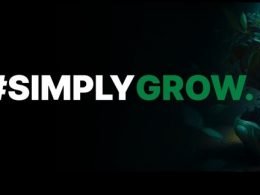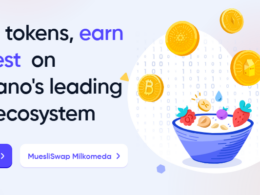Guchi.io is a new platform in the Cardano ecosystem which allows users to lend and borrow NFTs. It provides a novel functionality to Cardano NFTs via its smart contracts. Users can generate ADA yield by loaning out their crypto assets, or profit from the fall in floor price of an NFT collection by selling a borrowed NFT now and buying its replacement later.
The ‘HODL the Line’ feature allows for provision of liquidity to NFT collections by giving users the tools to build ‘buy walls’ comprised of locked ADA that will only be released when either another user sends an NFT from the specified policyID or the creator cancels the offer, in which case their ADA is returned.

Origins
One of Guchi’s co-founders is Alexander Watanabe, creator of the Cardano NFT Collection unsigned_algorithms. His experiences in the blossoming field of art on the blockchain inspired the initial concept of a mechanism for ‘shorting NFTs,’ which metamorphosized into the recently launched Guchi.io experience. Watanabe believes Guchi will provide a distinct new form of utility to Cardano NFTs that other lending and borrowing platforms lack. He says, “All these [Cardano] lending platforms are offering ADA loans collateralized with NFTs… They’re pawnshops, essentially, you go give them your watch and you get some cash. And if you bring the cash back, plus some interest, you get your watch back. Your NFTs are what you’re pawning, and you have a chance at getting them back by paying interest. Guchi is actually lending NFTs, that’s what makes it different.”
How to Borrow
Let’s say a Ronald is bearish on ‘Tuna Fish Hockey Society,’ a hypothetical NFT project on Cardano which he owns no assets from. He feels confident the team behind the collection is bluffing and he wants to call them on it. He checks Guchi.io to see if there are any ‘Lend’ offers available for the policyID of the ‘Tuna Fish Hockey Society,’ he sees several open offers but doesn’t like the terms set by the lenders.
Ronald decides to connect his Eternl or Flint wallet and ‘Create a Borrow’ on Guchi.io (he provides the ADA collateral and lenders fee in full, sets duration, specifies policy ID and return address). Ronald just put his money where his mouth is. All a potential lender must do to activate the loan is send their ‘Tuna Fish Hockey Society’ to the smart contract. There’s a woman named Debra who finds Ronald’s borrow offer appealing, so she sends one of her ‘Tuna Fish Hockey Society’ to the smart contract and immediately receives the ‘lender fee’ in return.
The clock is now ticking for Ronald, who is in possession of (what was recently) Debra’s NFT and begins the process of selling it for as much as he can. Reminder, because Ronald thinks the prices are going to fall during the life of the loan, he is motivated to sell now and buy back later. Once the NFT is sold, Ronald gets to keep the ADA and doesn’t need to engage with the Guchi.io smart contract until the loan duration ends.
There are two scenarios that can potentially play out: Ronald can buy another NFT from the matching policyID and send it to the smart contract, or he can default on the loan and surrender his collateral to Debra. It’s important to note that ANY NFT from the specified policyID will satisfy the smart contract, so Debra could be very disappointed by what Ronald sends back if she unknowingly loaned out a piece with value above the floor price due to rarity or some other significant characteristic.
If the prices of ‘Tuna Fish Hockey Club’ NFTs fall during the duration of the loan, Ronald has every reason to buy another piece (for less than he sold the borrowed piece) and use it satisfy the loan, as he gets to keep the ADA difference as profits while retaining the original collateral. If the prices rise during the duration of the loan, Ronald may decide to keep the ADA he earned from selling the borrowed NFT and walk away from the loan, in which case his collateral will be sent to Debra.
If we assume that the ADA collateral originally provided by Ronald into the smart contract was a figure equal to or above the new floor price of the policyID, then Debra will come out of the deal happy even if Ronald disappears without returning an NFT.
It’s worth noting that there are a multitude of strategies that could potentially be used by the borrower, besides shorting. For example, Larry is bullish on ‘Tuna Fish Hockey Society’ but doesn’t own any. He borrows an NFT and holds it without selling. On the last day of the loan, Larry checks the value of the NFT he borrowed – if it has gone up in price and is now worth more than the ADA collateral, he may choose to surrender his collateral and keep the NFT (which was essentially bought at a discount). If the value of the NFT drops during the loan, Larry can return the same NFT he borrowed and get his collateral back. In this case, the lenders fee acts as a relatively low-cost way to gain exposure to an NFT collection for a fixed amount of time.
How to Lend
This is basically the same as the borrow but is created by the lender by providing an NFT rather than the ADA collateral. To ‘Create a Lend,’ Debra must connect her Eternl or Flint wallet and lock up an NFT, then set the required collateral amount, lender fee, duration, and return address. Debra should set the collateral requirement at a level which she would be happy selling the NFT or a level which she doesn’t think the floor price for ‘Tuna Fish Hockey Club’ will reach or exceed during the loan.
If the cost to Ronald from picking up a replacement NFT is greater the collateral he put in, odds are he’ll walk away from the smart contract and Debra will receive the locked collateral ADA when it expires. But why would someone who’s bullish on a project want to offer up their NFT to someone who’s bearish? Because it allows Debra to earn yield on her NFTs that would otherwise be sitting stagnant in her wallet.
An NFT loan with a collateral amount of ₳1,500, lender’s fee of 3% (₳45), and duration of two weeks could potentially generate ₳1,170 in fees over the course of a year. In this way, Guchi.io demonstrates a new approach to deriving yield from crypto assets on Cardano.
HODL (the Line)
This is the frontline between bulls and bears, where they can battle over what the real price of a project is. Users of Guchi.io can ‘Create a HODL’ by specifying the policyID, a price they are willing to pay for any piece from that collection, and a return address. The ADA must be sent to the smart contract for the offer to go live. Anyone can satisfy the offer by sending an asset from the matching policyID (they will immediately receive the HODL ADA that was locked in).
You can create a HODL offer on Guchi.io but change your mind before an eligible asset is sent to the contract – in this case your ADA will be returned to you. HODLing the line on Guchi.io allows users to accumulate pieces from a collection while naming their own price. If you’re looking to exit a project and don’t want to go through the hassle of listing your NFT on a marketplace and waiting for a buyer, you can instantaneously offload your asset to someone who’s HODLing the line.
CNFTJungle.io is a popular real time NFT rarity database and statistics aggregation platform. They recently added Guchi’s HODL offers to the order book chart associated with each different NFT policyID. The depth of a collection’s buy offers vs. the sell offers should be balanced. There hasn’t been a user-friendly mechanism for building buy walls until now, so it shouldn’t be considered a negative indicator for a collection if there’s a major imbalance in their market depth… But soon it may be seen as a red flag if a collection doesn’t have ample support liquidity available, as this reflects the ADA that’s been committed to the collection by fans, collectors, traders, and holders.

According to Watanabe, the existing order books for every collection on Cardano (including his own project unsigned_algorithms) “drive home the current dynamics of the NFT marketplace… There’s this huge tidal wave of sell pressure and absolutely no support. Let’s show the actual demand for this project. What are people actually willing to pay for this thing? If I’m a holder, that HODL line represents exit liquidity that’s available to me right now.” Until now, people haven’t had a user-friendly way to build buy walls for NFTs on Cardano, so there could be surprising shifts in market depth over time that will no doubt come to influence how NFT holders perceive the value of collections.
Purpose
According to the Guchi website, the dApp seeks to become a mechanism that helps raise the standard of projects building in Cardano.
“We believe that in the long-term, the market and price reflect truth: you can outrun it in the short-term, but eventually it will catch up with you. To help truth catch up, we are providing a service so that people can profit from a native asset’s price decline. We hope that this provides a check to wanton speculation in the space, and will allow for healthier growth in the ecosystem.”
The mainnet launch took place very recently (December 5th, 2022), so it remains to be seen what effect Guchi.io will have on the Cardano ecosystem in the long run but watching how things progress will definitely be interesting!
References:
“guchi.io – DIY Shorting NFT.” YouTube, uploaded by Guchi, 3 December 2022, https://www.youtube.com/watch?v=RMo_ftBC7uc
“guchi.io – How (& Why) to Lend.” YouTube, uploaded by Guchi, 3 December 2022, https://www.youtube.com/watch?v=63HxjhiF-Dw
“guchi.io – HODL (the line) AKA: collection offers.” YouTube, uploaded by Guchi, 2 December 2022, https://www.youtube.com/watch?v=MzK_qat8EbU&t=275s
“guchi.io – Overview.” YouTube, uploaded by Guchi, 1 December 2022, https://www.youtube.com/watch?v=Y0i4Ggkrd6o
Guchi. “FAQs.” Guchi.io https://guchi.io/faqs. Accessed 8 December 2022.
Guchi. “About.” Guchi.io https://guchi.io/about. Accessed 8 December 2022.









